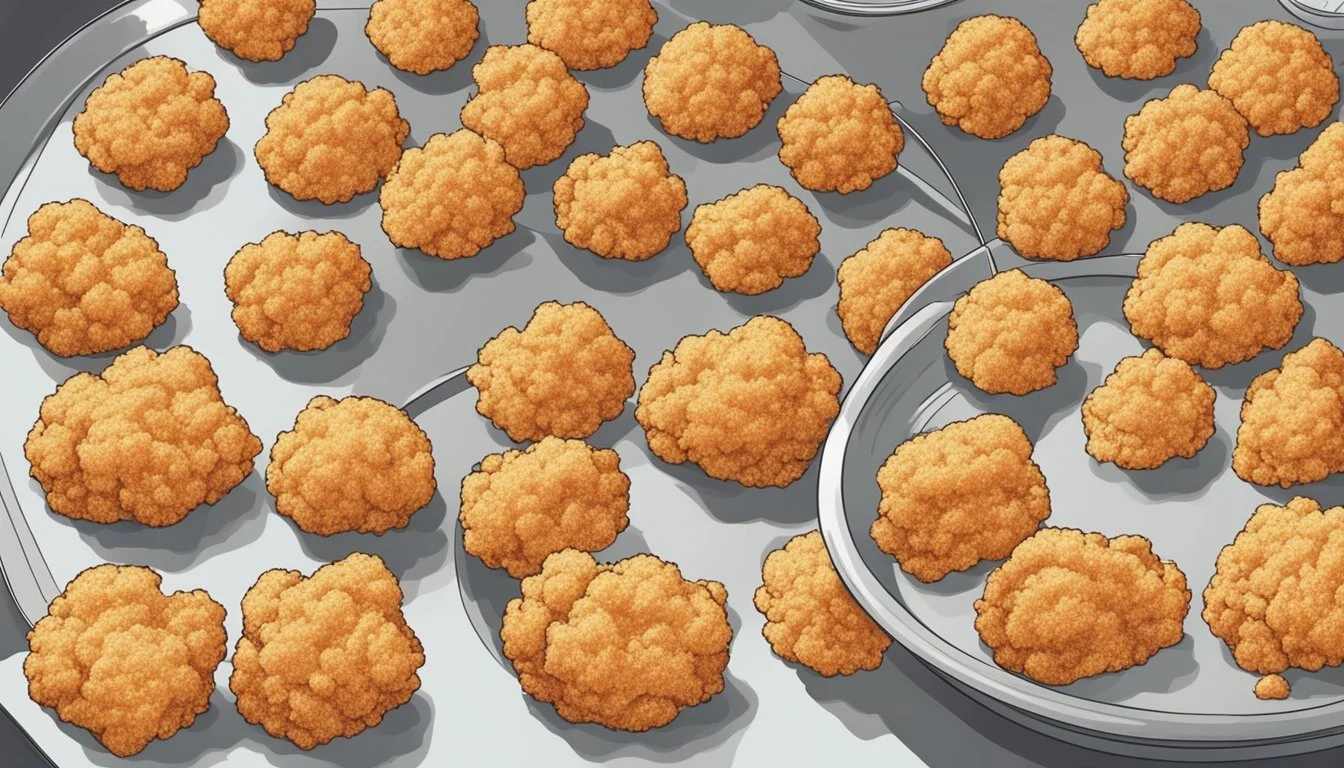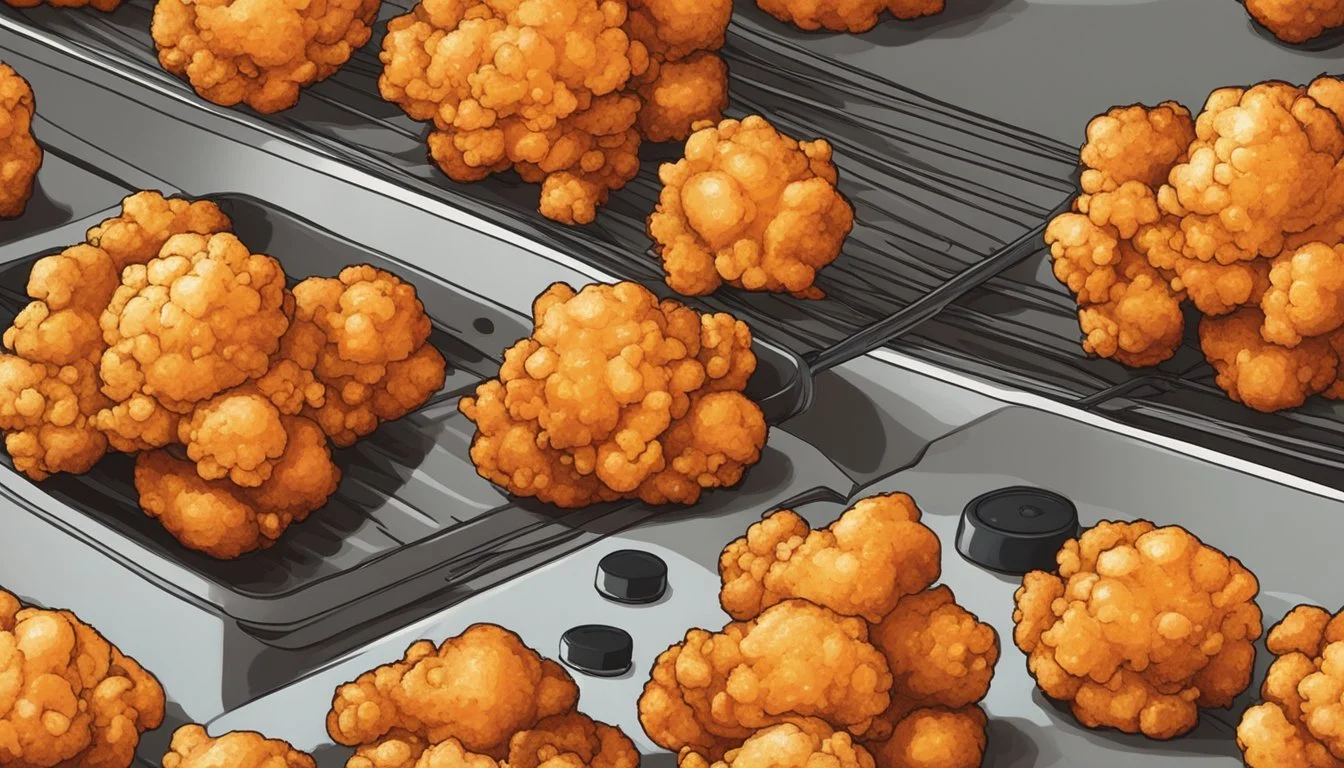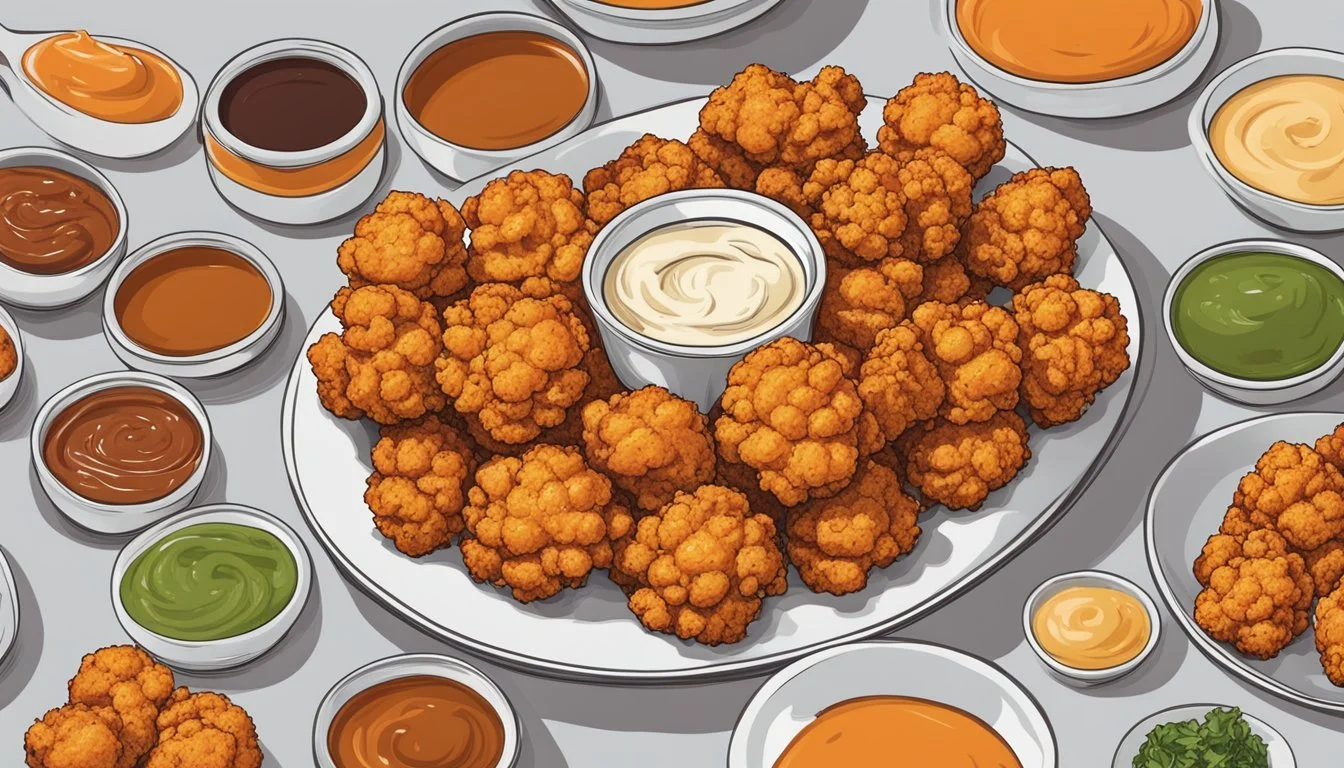How Long Do Buffalo Cauliflower Bites Last?
Storage Tips and Shelf Life
Buffalo cauliflower bites are a delicious and popular appetizer that offers a flavorful alternative to traditional buffalo wings. This recipe typically involves coating bite-sized cauliflower pieces in a seasoned batter and baking them to perfection. These bites are perfect for parties, game days, or as a tasty snack.
When it comes to storage, these crispy treats can last up to three to four days in the refrigerator if stored properly in an airtight container. It's essential to reheat them in the oven to maintain their crispiness, as microwaving can make them soggy. You can also freeze the bites for up to two months, though they are best enjoyed fresh for the full crunch and flavor experience.
Understanding how long your buffalo cauliflower bites last can help reduce food waste and ensure that you always have a tasty appetizer ready for any occasion. Whether you're preparing a small batch for immediate consumption or making a larger batch to enjoy over a few days, knowing the storage times is key to keeping your bites delicious and safe to eat.
Overview of Buffalo Cauliflower Bites
Buffalo cauliflower bites have gained significant popularity as a healthier, vegetarian alternative to buffalo chicken wings. These bites are known for their crispy texture and spicy flavor, making them a favorite appetizer among many.
Definition and Popularity
Buffalo cauliflower bites are made by coating cauliflower florets in a seasoned batter, baking or frying them, and then tossing them in buffalo sauce. The result is a crispy, spicy appetizer that mimics the flavors of traditional buffalo wings. This dish is especially popular among vegetarians and health-conscious individuals.
Its rise in popularity can be attributed to the increasing demand for plant-based alternatives that do not compromise on taste or texture. Buffalo cauliflower bites are often found on restaurant menus and at social gatherings, making them a mainstream option.
Comparison with Traditional Wings
While buffalo cauliflower bites aim to replicate the experience of eating buffalo chicken wings, there are distinct differences. First, the primary ingredient is cauliflower, not chicken. This makes the bites suitable for vegetarians and those looking to reduce meat consumption.
Nutritionally, cauliflower bites are generally lower in calories and fat compared to traditional wings. They are baked or air-fried, which often results in a lower fat content than deep-fried wings. Additionally, the use of cauliflower provides extra fiber and vitamins not found in chicken.
Despite these differences, buffalo cauliflower bites manage to capture the essence of buffalo wings, especially when it comes to the flavor provided by the buffalo sauce. This makes them a versatile and appealing option for a wide range of dietary preferences.
Ingredients and Alternatives
Preparing Buffalo Cauliflower Bites involves simple ingredients, and there are many ways to adjust the recipe for different dietary needs. This ensures that everyone can enjoy these tasty bites, regardless of their specific preferences or restrictions.
Core Ingredients
The main ingredient is cauliflower, which should be cut into bite-sized pieces. A batter made from flour, water, salt, garlic powder, and sometimes onion powder is used to coat the cauliflower pieces. Various recipes also enlist hot sauce, butter, and olive oil to create the buffalo flavor.
Ingredients:
Cauliflower
Flour
Water
Salt
Garlic powder
Onion powder (optional)
Hot sauce
Butter
Olive oil
These elements combine to give the bites their distinctive buffalo flavor and crisp texture. The hot sauce and butter mixture is key to achieving an authentic buffalo wing taste.
Substitutions for Dietary Preferences
To accommodate different diets, several substitutions can be made. For a gluten-free version, almond flour or gluten-free flour can replace regular flour. Breadcrumbs can be omitted or swapped for a gluten-free variant.
For a vegan alternative, vegan butter can replace regular butter. The batter can be made using water or plant-based milk such as almond milk instead of dairy milk. Additionally, an egg used in some recipes can be replaced with a flaxseed or chia seed "egg" to maintain the desired consistency.
Substitutions:
Gluten-Free: Almond flour, gluten-free flour, gluten-free breadcrumbs.
Vegan: Vegan butter, almond milk, flaxseed or chia egg.
These adjustments ensure that Buffalo Cauliflower Bites can be enjoyed by individuals with specific dietary restrictions while keeping the flavor and texture as close to the original as possible.
Preparation Process
Creating perfect buffalo cauliflower bites begins with proper preparation. This involves prepping the cauliflower, making a flavorful batter, ensuring even coating, and baking to the right texture.
Prepping the Cauliflower
Start by washing the cauliflower thoroughly to remove any dirt. Pat it dry using a clean kitchen towel. Cut the cauliflower into bite-sized pieces, aiming for uniform sizes to ensure even cooking. Discard the core and any large stems, as they don't make for good bites. For ease, you can use a sharp knife or kitchen scissors. With the cauliflower ready, the next step involves creating a batter that will enhance the bites' crispy texture.
Making the Batter
In a medium bowl, combine all-purpose flour, water, and necessary seasonings like garlic powder, paprika, and salt. Mix until the batter is smooth with no lumps. The ideal batter should be thick enough to cling to the cauliflower without dripping excessively. If it seems too thick, add a small amount of water. Conversely, a bit more flour can help if it's too thin. This batter is crucial for creating a crispy outside once baked.
Coating and Seasoning Techniques
Transfer the cauliflower pieces into the batter bowl, ensuring each piece is well-coated. Using a large zippered bag can be helpful—place the coated cauliflower inside, close the bag, and gently toss. This method ensures even coating and minimizes mess. Allow any excess batter to drip off by placing the cauliflower in a strainer. For additional flavor, sprinkle the coated bites with a bit of extra paprika or pepper.
Baking Instructions
Preheat the oven to 450°F (230°C). Line a baking sheet with parchment paper or use a silicone baking mat. Arrange the coated cauliflower in a single layer on the baking sheet, ensuring they do not touch. This allows the heat to circulate, producing an even bake. Bake in the preheated oven for 20-25 minutes, turning halfway through to ensure even baking. The bites should be golden brown and crispy.
These processing steps ensure the buffalo cauliflower bites are flavorful and appealing with the right texture. Proper preparation and baking techniques contribute significantly to achieving the desired results.
Cooking and Timing
When preparing Buffalo cauliflower bites, proper cooking methods and precise timing ensure optimal taste and texture. Different methods like oven baking and using an air fryer provide varying results.
Oven Baking Times
Oven baking is a popular method for cooking Buffalo cauliflower bites. Preheat the oven to between 425°F to 450°F. The cauliflower should be broken into bite-sized florets before being coated with a batter or seasoning.
For even cooking, spread the florets in a single layer on a parchment-lined baking sheet. Cooking typically takes 20 to 30 minutes, depending on the oven. Halfway through, turning the florets ensures even browning and crispiness.
Check for a golden brown color and crisp edges before removing from the oven. Let them cool slightly before serving, as this helps the cauliflower retain its structure.
Alternative Cooking Methods
Using an air fryer is another effective method for making Buffalo cauliflower bites. Preheat the air fryer to 375°F to 400°F. Place the coated florets in the air fryer basket, ensuring they are in a single layer.
Cook for 15 to 20 minutes, shaking the basket halfway through to promote even cooking. This method often results in a crispier texture compared to oven baking.
Grilling is also an option, although less common. Preheat the grill to medium-high heat and place florets on a grill-safe mat or skewer. Grill for about 10 to 15 minutes, turning occasionally to avoid burning. Grilling can add a smoky flavor but requires careful monitoring to prevent charring.
Serving Suggestions
Buffalo cauliflower bites can be a versatile addition to various occasions. They pair well with specific dips and dressings and can be presented creatively to enhance the dining experience.
Accompanying Dips and Dressings
Pairing buffalo cauliflower bites with the right dips can enhance their flavor. Ranch dressing is a popular choice that provides a cool contrast to the spicy buffalo sauce.
Blue cheese dressing is another excellent option, offering a rich and tangy taste that complements the cauliflower. For a crunchy and fresh touch, serve alongside celery sticks and carrot sticks. These veggies also balance the heat and add color to the dish.
Offering a variety of dips and dressings can cater to different tastes, making the bites a hit at any gathering.
Presentation Tips
The way buffalo cauliflower bites are presented can elevate the dining experience. Arrange the bites on a platter with a generous amount of dips in small bowls around the edges.
Consider adding a mix of celery sticks and carrot sticks to the presentation for a burst of color and added crunch. For game day or party settings, use themed platters or colorful napkins to match the occasion.
Keeping the bites warm and crispy can be achieved by using a warming tray. This attention to detail in presentation can make the dish more appealing and enjoyable for all guests.
Nutrition Information
Buffalo cauliflower bites can be a healthier alternative to traditional buffalo wings. Key nutrition elements include their macronutrient breakdown and caloric content, both of which are important for maintaining a balanced diet.
Macronutrient Breakdown
Buffalo cauliflower bites are often low in fat and high in fiber. They can provide a modest amount of protein depending on the ingredients used. Typically:
Protein: Approximately 1-2 grams per serving
Carbohydrates: Around 5-7 grams per serving, with a significant portion from dietary fiber
Fat: Usually low, about 1-2 grams per serving, especially if baked instead of fried
Ingredients like olive oil and flour can affect the fat and carbohydrate content, respectively. Using whole-wheat flour can increase the fiber content further.
Caloric Content
Buffalo cauliflower bites are relatively low in calories. On average, they contain about 25-35 calories per bite. The method of cooking, such as baking versus air-frying, can slightly adjust these values. The addition of sauces can also add calories, particularly if they contain added sugars or oils.
Cooking methods that use less oil and opting for minimal battering will typically result in fewer calories. It's essential to consider these factors when calculating the total caloric intake.
Buffalo cauliflower bites can be a great low-calorie option for those looking to indulge in a tasty snack without compromising their dietary goals.
Storage and Shelf Life
Buffalo cauliflower bites can maintain their best quality for several days when stored properly. Additionally, freezing is an option that can extend their shelf life even further.
Storing Leftovers
Leftover buffalo cauliflower bites should be stored in an airtight container to prevent moisture and air from entering, which can cause them to become soggy. Place the container in the refrigerator, where the bites can last for up to 3-4 days.
Make sure to let the bites cool completely before refrigerating. This prevents condensation, which can affect their texture. If any signs of mold or off-smells are noticed, discard the bites immediately.
Freezing and Reheating Options
To extend the shelf life of buffalo cauliflower bites, freezing is an effective method. Begin by arranging the completely cooled bites on a parchment-lined baking sheet in a single layer. Freeze them for about 2-3 hours, or until they are solid.
Transfer the frozen bites into an airtight freezer bag. Frozen cauliflower bites can be stored for up to three months. For reheating, preheat an oven to 400°F (200°C). Place the bites on a baking sheet and heat for approximately 10-15 minutes until they are crispy again.
Troubleshooting Common Issues
Successfully making Buffalo cauliflower bites involves ensuring they aren't soggy and achieving a crispy texture. The key challenges include controlling moisture and using the right cooking techniques.
Preventing Soggy Bites
To prevent soggy bites, start by patting the cauliflower dry after washing. Excess moisture can lead to a lack of crispiness during cooking. Using a clean kitchen towel or paper towels can help remove surface water.
Another common issue is excess batter. When coating the cauliflower, ensure that there isn't too much batter, as this can prevent it from becoming crispy. Lightly shake off any extra batter before placing the cauliflower on the baking sheet.
Finally, spacing the cauliflower pieces on the baking sheet ensures proper air circulation. Overcrowding can trap steam and make the bites soggy. If necessary, use two sheets instead of cramming everything onto one.
Achieving Crispiness
For a crispy texture, preheating the oven or air fryer is crucial. An oven set to around 400-425 degrees Fahrenheit works well for baking. Using a silicone baking mat or parchment paper can prevent sticking without adding extra oil.
Coating the cauliflower with a layer of panko breadcrumbs can significantly enhance crispiness. Panko crumbs are lighter and crispier than regular breadcrumbs, making them an excellent choice for Buffalo cauliflower bites.
During baking or air frying, flipping the cauliflower halfway through can promote even crispiness. Additionally, using a light spray of cooking oil on panko-coated pieces before baking can give a more golden and crispy result. Avoid oversaturating with oil, though—a quick, light spray should suffice.
To summarize, drying the cauliflower, avoiding excess batter, spacing pieces properly, using panko, and applying cooking spray are essential steps in achieving perfect Buffalo cauliflower bites.
Frequently Asked Questions
When preparing buffalo cauliflower bites, several important queries often arise, including questions about ingredients, cooking methods, and proper storage to ensure quality and longevity.
Ingredient Queries
Buffalo cauliflower bites typically require cauliflower, a mixture of flour and milk for the batter, and various seasonings like garlic powder and paprika. Understanding ingredient proportions is key. For instance, a common batter ratio combines 1 cup of flour with 1/2 cup of milk, seasoned to taste. Buffalo sauce is usually added after baking for a spicy kick. Pairing with a baking sheet lined with parchment paper helps prevent sticking and promotes even cooking.
Cooking Queries
Cooking buffalo cauliflower bites involves baking at a high temperature. Most recipes recommend preheating the oven to 425°F (220°C) or 450°F (232°C). Baking generally takes 25-30 minutes, with flipping halfway through to ensure even crispiness. The size of the cauliflower florets can affect cooking time; smaller pieces may bake faster. A greased or parchment-lined baking sheet helps achieve an ideal texture by promoting even heat distribution and preventing sticking.
Storage Queries
For optimal storage, place leftover buffalo cauliflower bites in an airtight container to maintain freshness. Properly stored in the refrigerator, they can last 3-4 days. Reheating can be done in the oven to restore crispiness. Freezing is an option for extended storage, but texture may suffer upon reheating. An airtight container or zippered bag can help prevent freezer burn. Estimating how much to store at once depends on typical consumption rates and space availability.
Conclusion
Buffalo cauliflower bites make for a delicious and healthy snack or appetizer. They serve as an excellent vegetarian alternative to traditional buffalo chicken wings.
When made with simple ingredients and following a homemade recipe, these bites can be enjoyed fresh or stored for later.
Storage Tips:
Refrigeration: Store the bites in an airtight container in the refrigerator for up to 3-4 days.
Reheating: To maintain crispiness, reheat in an oven at 350°F for about 10-15 minutes.
Freezing: While not ideal, they can be frozen. Place on a baking sheet, freeze until solid, then transfer to a freezer bag. Reheat in the oven directly from frozen at 375°F for 20-25 minutes.
Buffalo cauliflower bites are versatile:
Serve them as a standout snack.
Use them as an appetizer for gatherings.
Pair them with a dipping sauce like ranch or blue cheese for an extra kick.
Enjoy these tasty bites whether you're a vegetarian or just looking for a lighter option than buffalo chicken wings.












